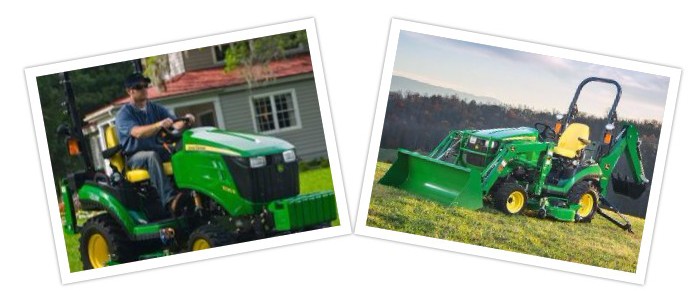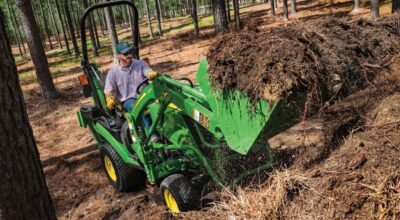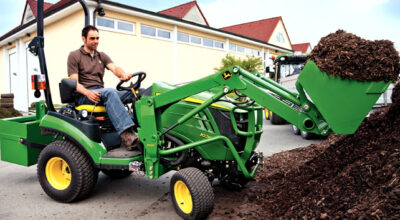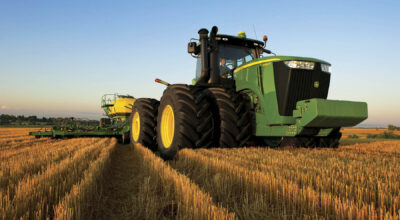For years, John Deere’s 1 Family Sub-Compact Utility Tractors have been popular choices for those looking to take on jobs around the property like seeding the lawn or building fences. In particular, the John Deere 1025R and 1026R have remained popular due to their comfort features, ease of use, and sheer entertainment value.

The John Deere 1025R and 1026R have consistently stood out within the used tractor market, but what makes one different from the other? In this post, we’ll take a closer look at the 1025R vs. the 1026R as we showcase some of the key similarities and differences between the two.
Ready to experience the power and precision of John Deere machinery? Contact us today!
Engines
The 1025R hosts a three-cylinder Yanmar® TNV Series diesel engine that provides 24.2 gross engine power and 18 PTO horsepower. On the other hand, the 1026R provides operators with 25.2 horsepower. Both engines were designed with performance and durability at top of mind.

Hydraulics
Both the John Deere 1025R and 1026R include an open-center hydraulic system. The tractors’ power steering is supported by a hydrostatic charge pump that provides the power needed to the circuit. Dual mid-selective control valves (DSCVs) are standard on these models and can be used to operate any loaders or other implements that might be attached to the tractor. These tractors come with two sets of right-hand couplers so the operator can control two hydraulic functions, such as loader bucket and boom cylinders.
Brakes and Steering
The 1025R and 1026R tractors are both made with spur gear final drives and a wet-disk brake design. Unlike most competitive models, the brake pedals are located on the left side of the tractor so the operator can access the HST foot pedals with their right foot. Each model boasts power steering functionality as a standard feature, making it easy to turn the tractor even when moving at low speeds. Both tractors can turn at a 7.4-ft radius.
Frame and Design
The standard four-wheel drive axle on these models allow for extra traction in tough conditions and a differential lock is also included to further increase traction when necessary. The engines within the 1025R and 1026R models are isolated from the frame and transmission in an effort to reduce vibration.
Operator Station
The 1025R and 1026R can both withstand a long day of work as they host a variety of shared comfort and control features. This includes color-coded controls that are laid out ergonomically and a range of other features like a suspension seat, beverage holder, 12-V outlet, and tilt steering.
We hope this post provided you with the information needed to identify what’s similar and different among the John Deere 1025R and 1026R options.
If you have any further questions about either of these models, contact your local John Deere dealer.
If you enjoyed this post or want to read others, feel free to connect with us on Facebook, Pinterest, or Twitter!



